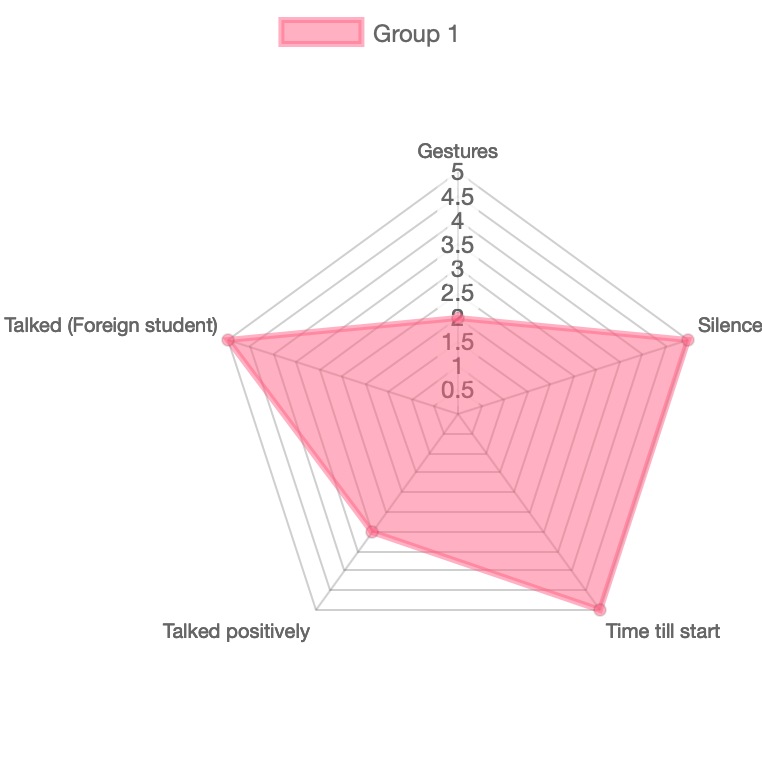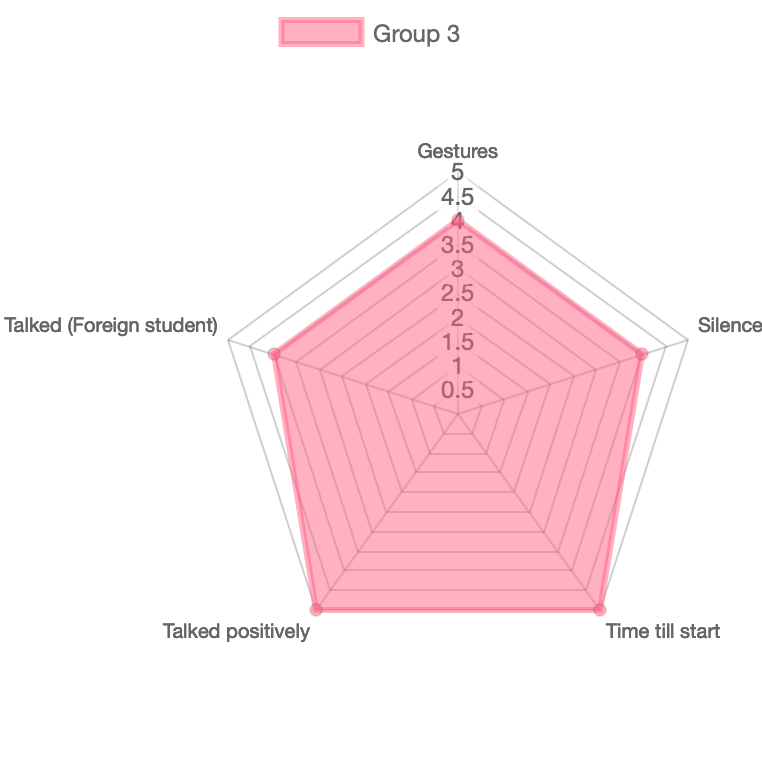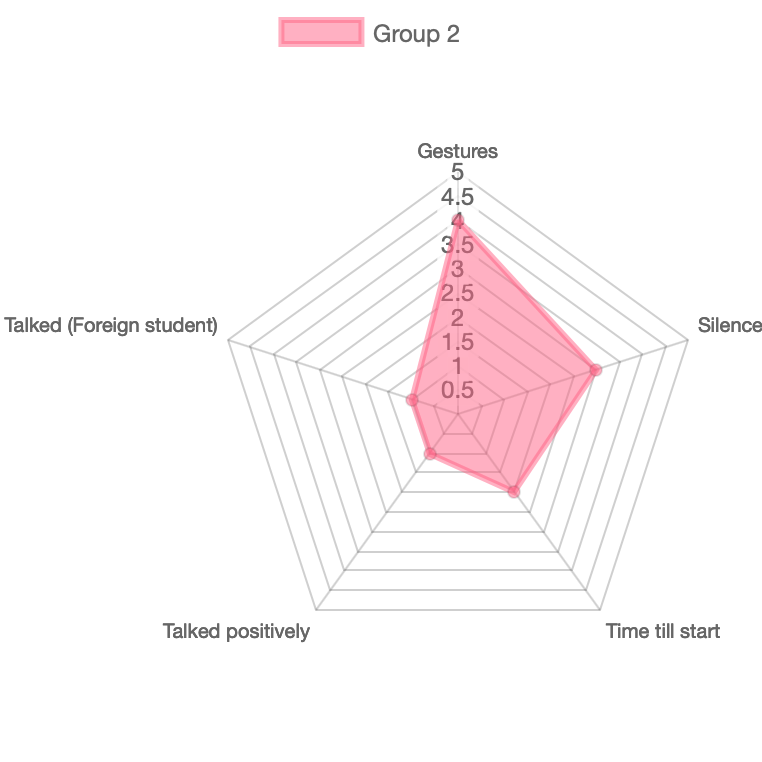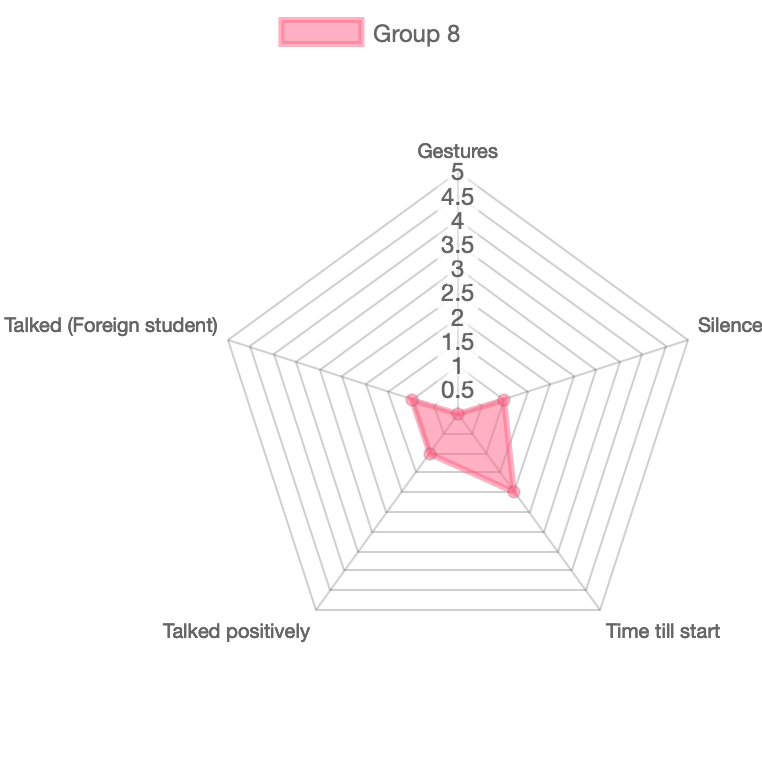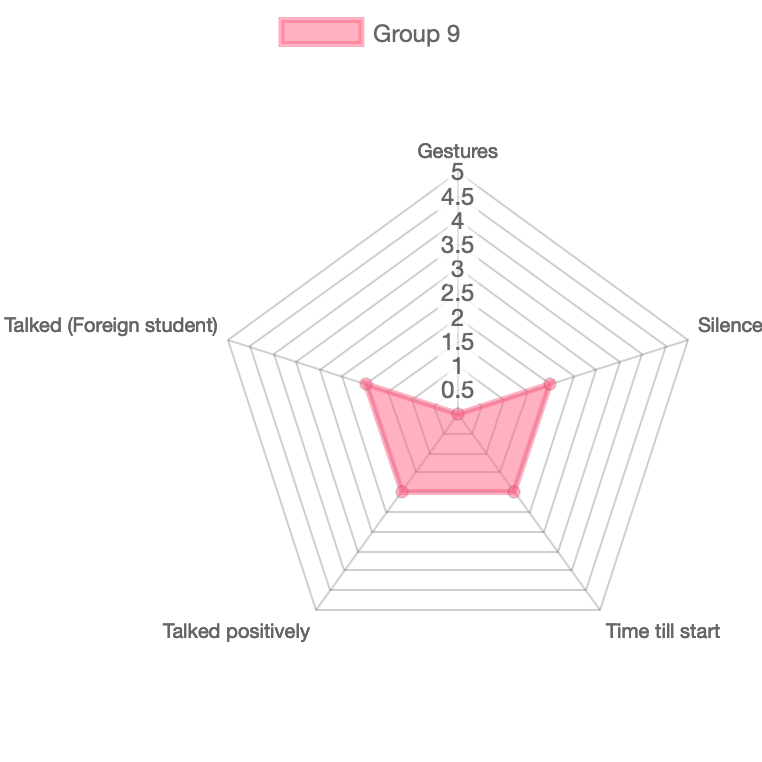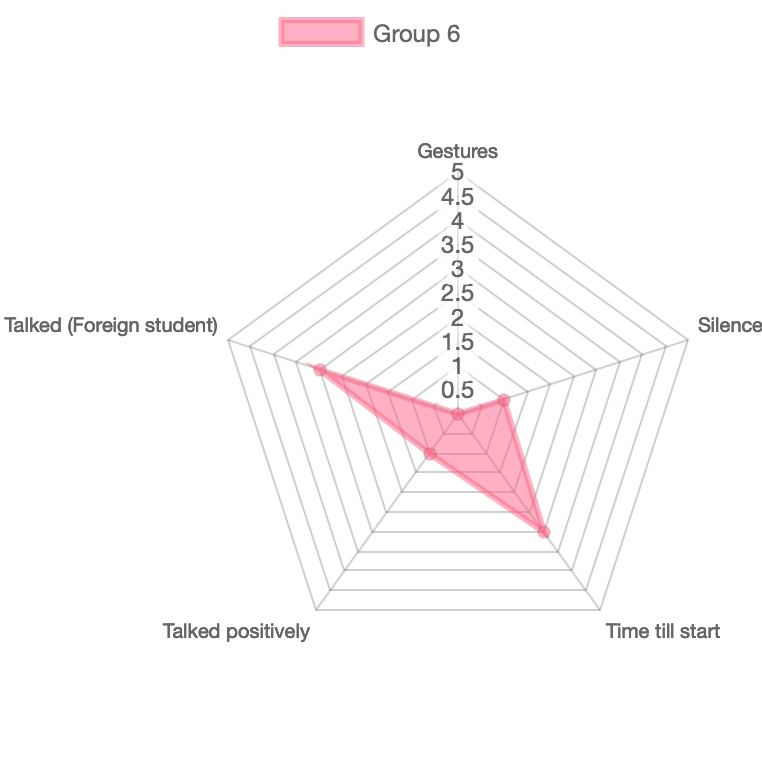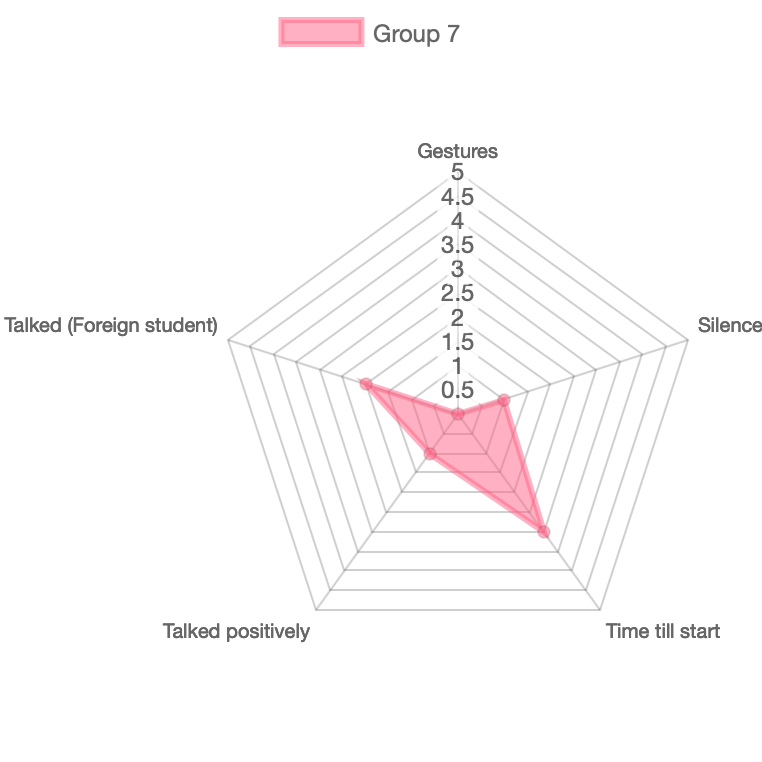The more larger the area of the graph shows the more how lively conversation was.
This time, we classified 3 groups out of 9 groups that had a particularly lively conversation and other groups.
We will analyze the commonalities of each.
*Item names of graphs
Gestures → Frequency of gestures
Silence → Frequency of Becoming silence
Time till start → Time it took to start talking
Talked(foreign student) → Total time the foreign student talked
Talked positively → The number of participants who talked positively
- About the culture of international kids and Japanese culture
- They were asking international kids like “How about you?” if they can’t get in the conversation -They were nodding and showing attitudes even if they couldn't understand and not perfect English.
- Even they were talking in simple English, other people were listening to them trying hard to explain, and they were very happy when the word was transmitted.
Silence → Trying to talk little by little
- They were trying to speak actively, but they couldn't communicate in English so as a result they were consulting within the group.
- They couldn’t speak English very well, but they were using simple questions in English which they all can understand so that the international kids could also enjoy it.
- Since it was a flow of the conversation asking a question once and then consulting in Japanese, so it seemed difficult to catch the conversation and continuing. They were over acting (of course in a good way) like “Wow!” and trying to liven up the place, and it seemed like they were having fun.
- They were waiting and seeing who will talk first and as a result they just introduced themselves and after that they were all silenced
- Only few of the member introduced themselves
- There are many replies that cutting off the story such as "Thank you"
- Talk past each other
- They chose a topic that is difficult for conversation to develop (asking favorite color, how many years have been doing sport, etc.)
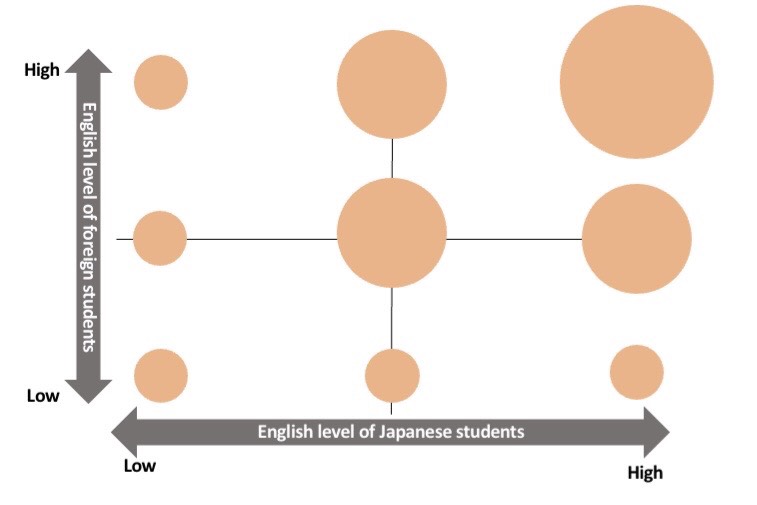
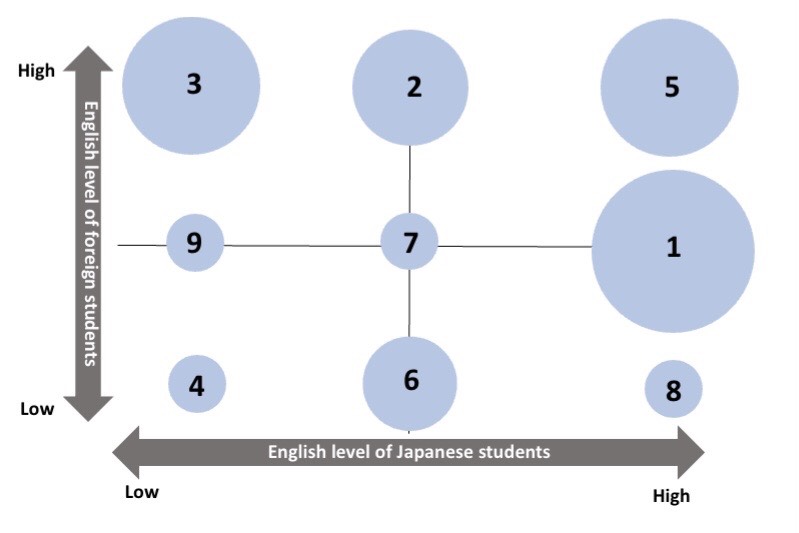
The figure shows our expectations (left figure) and results (right figure) regarding the correlation between the participants' English level and how lively the conversation was. The larger the circle is, the more exciting the conversation was. Before the verification, as shown in the figure on the left, we expected that the higher the English level of Japanese and foreign students are, the more exciting the conversation would be. But from the actual results, as shown in the figure on the right, it cannot be said that the English levels of both parties aren't necessarily related to the excitement of conversation. There are some parts that match with the expectations, but we also found that the language barrier can be overcome by activeness and how they select topics, as mentioned above.
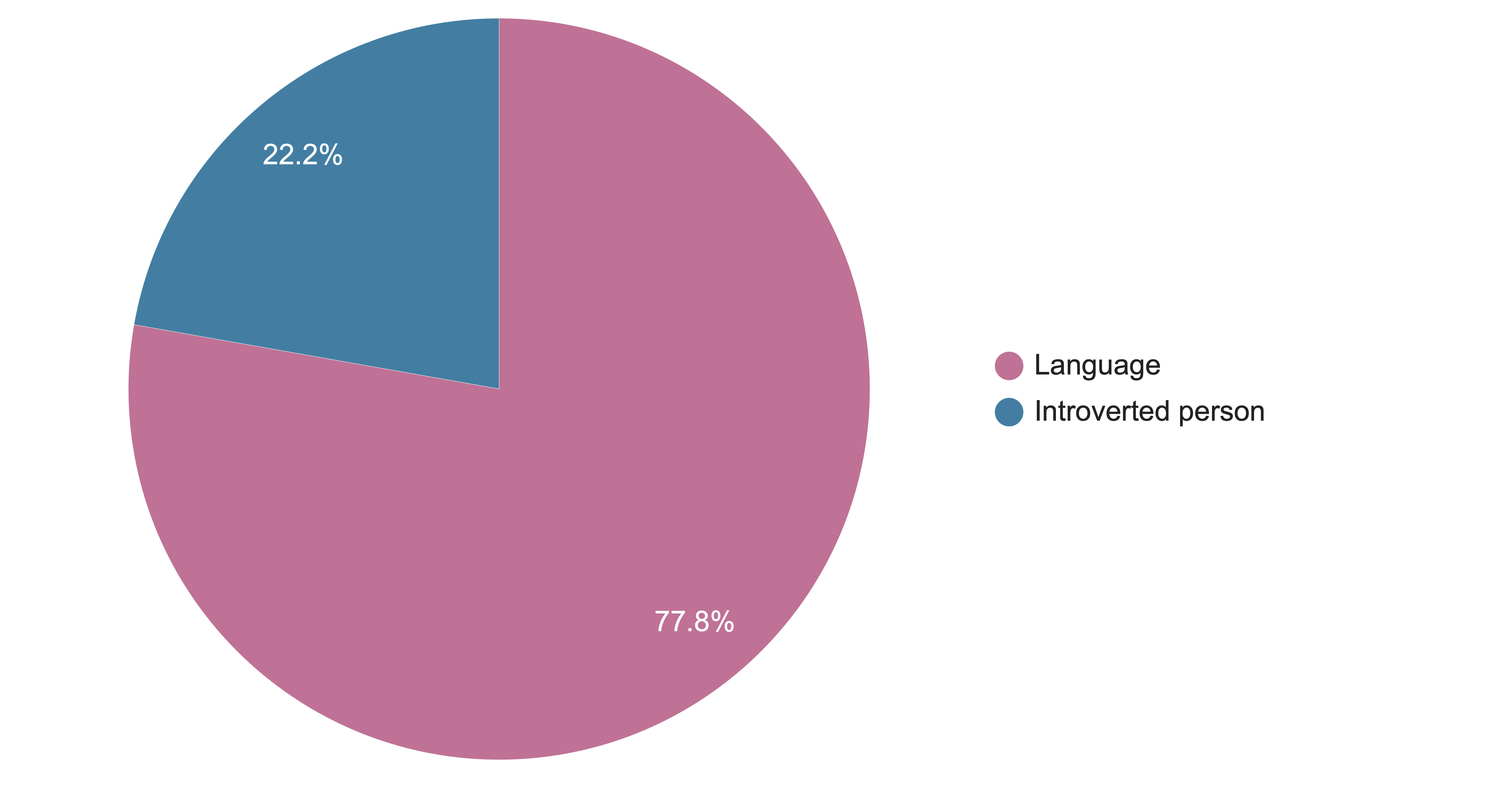
You can see from the results of the questionnaire conducted on foreign students that this is true. Although this survey was descriptive, all students mentioned language (including accents) or positiveness
OpinionOur opinion
Back



